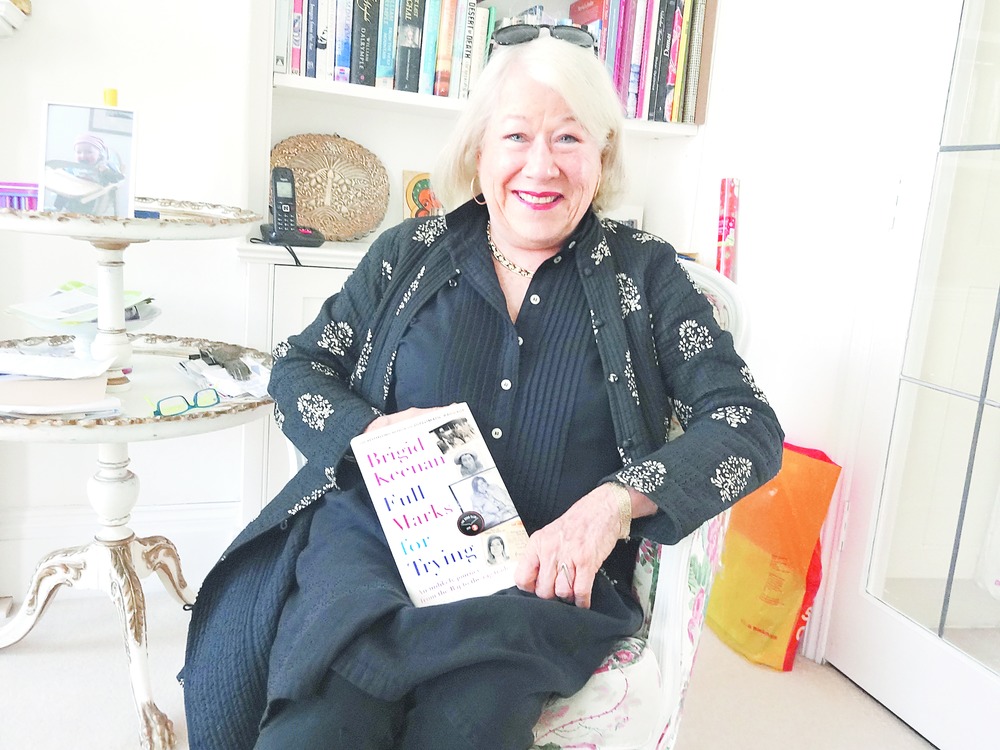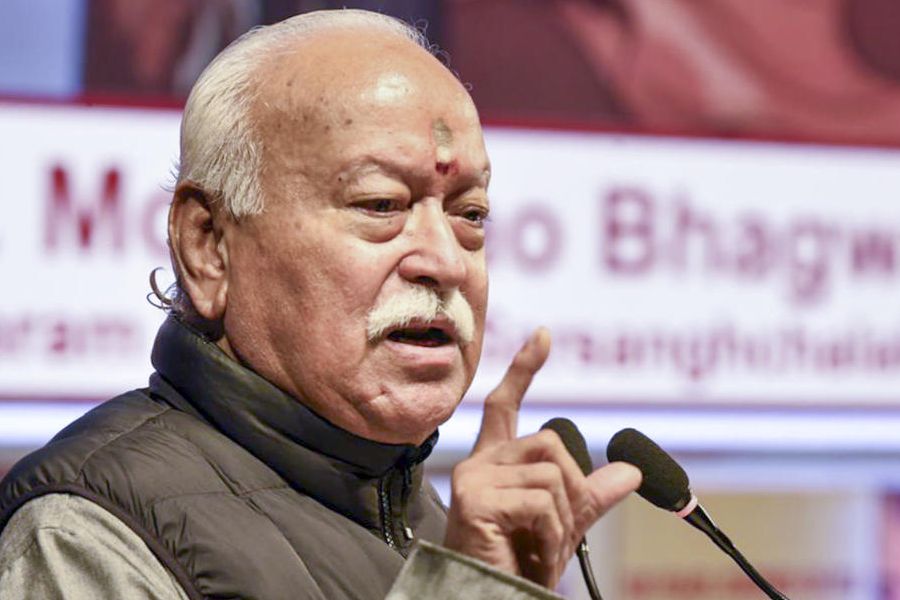
As a child growing up in India, Brigid Keenan would sit on her ayah's knee and recite Little Miss Muffet in Hindi. She remembers every word of it: Muffety Mai/ Doodh malai/Ek bar ghas par baithi/ Ek makri/Sari ko pakri/ Bhag gayi/Muffety Mai.
"It is part of my childhood," the writer says enthusiastically as she recites the fond old rhyme. We are in her London flat, discussing her memoirs Full Marks for Trying, An Unlikely Journey from the Raj to the Rag Trade, which covers her life from her childhood in India to her glamorous life as a fashion writer in London and Paris.
Wearing a long black top and trousers, a design that is "almost Indian", Keenan, 76, is her usual self - warm and funny. Like most people of her generation who have links with India, she is in love with the place of her birth. It is, she points out, a connection that goes back 200 years.
Four generations ago, Keenan's family left their native Ireland to sail to India to join first the East India Company and then the Raj. They worked as railway engineers, army and customs officers, foresters and indigo planters.
Her great grandfather owned a silk factory in Bengal's Nakanda - a place she is still trying to trace, armed with a sketch of the factory. Her grandfather fought in World War I with the British Indian Army. Her India-born father - trained at the Royal Military Academy Sandhurst - was in the Dogra regiment; he married her mother in Bangalore.
.jpg)
Keenan - the second of three daughters - was born in Ambala in November 1939, two months after the start of WWII. The last of the Raj babies in India (others included British actresses Joanna Lumley and Julie Christie), she lived through the most turbulent days of Indian history: WWII, Indian Independence and the horrors of Partition. And yet, despite the violence and the trauma, the world she describes is enveloped in love and warmth, sheltered by her parents and her favourite "Ayah-Ma".
"I think of her all the time. I don't know what happened to her," says Keenan, her eyes misting over.
She writes lovingly about her in her book released by Bloomsbury earlier this week. "Ayah-Ma had been my support and protector, my dark guardian angel... in her eyes I was incapable of doing wrong," she writes. She recalls the loud screams (on both sides) when they were separated, the day the family left for England. They had to be literally pulled apart.
It was an idyllic childhood spent in various cantonment towns across India - from Jabalpur and Pune to Secunderabad - and various stations in between. There was even some time spent in Wah, in present-day Pakistan, where the family stayed in tents with the water leaking through.
"I remember the warmth of the people and the sunshine. I remember never being cold," says Keenan. Yet there was tension in the air and it filtered down to the children despite the best efforts of their parents. Stories of the Black Hole of Calcutta and the Siege of Cawnpore were legendary. Tales about the Indian rope trick terrified the children, as did those about "evil" fortune tellers and magicians. As children they would often enact the scene of the women and children stuck in the Residency in Lucknow during the uprising of 1857.
Even as a child of seven or eight, Keenan was aware that the English were a minority in a country that wanted them out. She would prepare for the worst, in case they became beggars, wrapping her nightie around her in various ways (sometimes it became a skirt with a belt around the waist, at other times she teamed it with her mother's scarf around the neck).
By February 1947, the children had got used to hearing Jai Hind at every street corner and were as excited about India getting Independence as the Indians were. The women and children in the family were protected from the full horrors of Partition as they were based in the south in Kotagiri in the Nilgiri Hills. Keenan's father, however, was on duty with the Punjab Boundary Force and was witness to the killings.
''Iremember how he told my mother that they were going to split the Indian Army and send the Muslim soldiers to Pakistan. It was unthinkable for him," she says.
It was, however, only after their parents' death, that Keenan and her sisters discovered a box of letters he had written to his mother about the Partition. The letters captured the full horror of the killings on the trains, and the women and children who were slaughtered. His description of the rows of quilts left behind in the fields as the people fled remains with her.
"It broke his heart," she says. "He felt powerless to save the situation."
The letters give an account of his encounter with the Raja of Faridkot who had initially guaranteed the Muslims safe passage through his land, and then diverted the route at the last minute. The refugees were massacred. It made her father so angry that he stormed into the palace revolver in hand and threatened to kill the king. The king, she says, pleaded for his life and confessed that he had reneged on his promise because he wanted to change his pro-Muslim image.
"I don't think my father would have actually killed him, but it just shows how angry he was," says Keenan. "My parents could never stay on in India after that. They loved India, but they had to leave."
Post-war England to which the family returned was a cold, damp place with rationing and queues. "The food was terrible. We had been brought up on such wonderful food in India. The word gulab jamun was written on my heart. I missed the sunshine, the people, the friendliness. Also, I had never worn so many clothes in my life!"
Later, when Keenan became fashion editor at The Observer and The Sunday Times, and worked in the swinging Sixties with photographer David Bailey and supermodel Jean Shrimpton, had her hair styled by Vidal Sassoon and went to cover the Vietnam War in a mini-skirt, Keenan always remembered her childhood in India as having prepared her for the world by infusing her with a natural curiosity.
She returned to Delhi in 1988 with her diplomat husband Alan Waddams, and found it easy to blend in. She is proud of her book Travels in Kashmir and is a regular at the Jaipur Literature Festival as the author of such bestselling books as Diplomatic Baggage and Packing Up. As fashion editor of Oldie magazine, the journalist in her is always looking for the unusual story.
And, of course, for the odd nursery rhyme.
"Next time I will do Humpty Dumpty in Hindi," she laughs.











